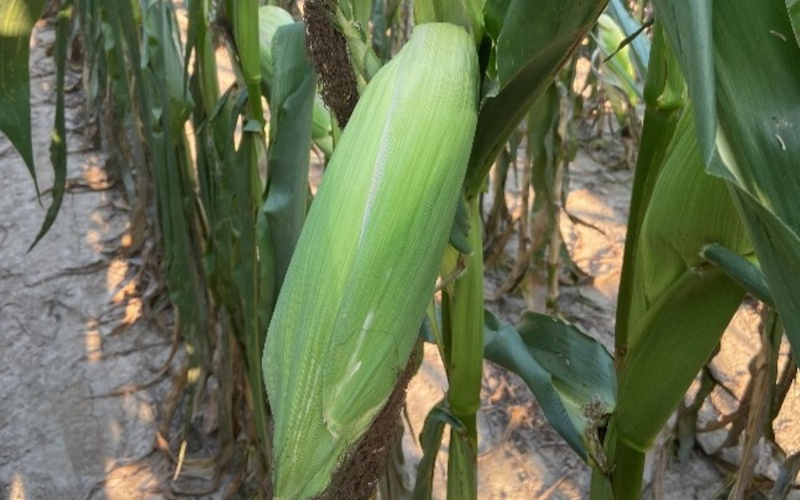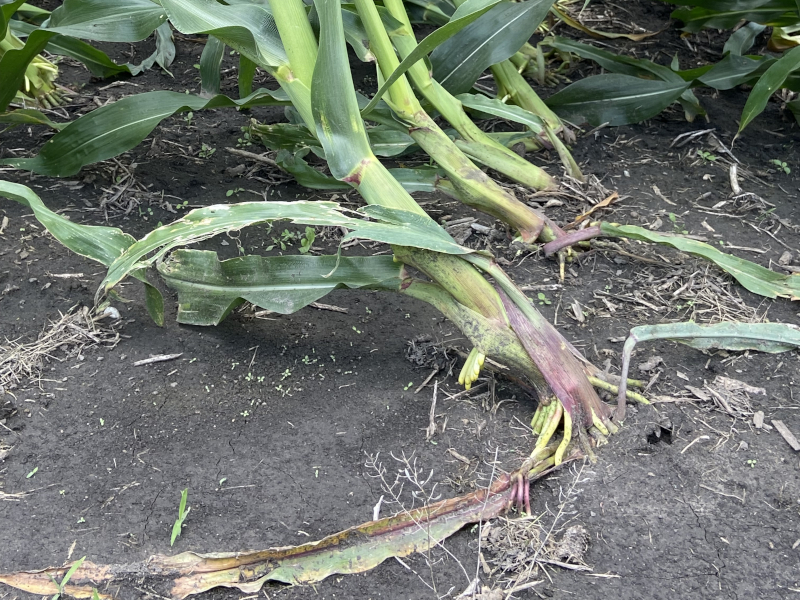Making Sense of Grain Test Weight in Corn
What is test weight?
Although yield is always at the forefront of many corn farmers and agronomists’ minds during harvest, another important discussion topic each fall is that of grain test weight. Although grain test weight is often discussed (or debated) when determining how well someone’s corn did, this number can often be confusing when understanding its importance, especially in relation to corn grain yield. Grain test weight is used as a grain quality measurement and is identified as the volumetric weight of grain (pounds per bushel). Test weight is based on the official volumetric bushel measurement of 1.244 cubic feet. In addition, the USDA defines the minimum allowable test weight as 56 lbs/bu and 54 lbs/bu for No. 1 yellow corn and No. 2 yellow corn, respectively. Corn grain in the U.S. is marketed specific to a 56-lb bushel regardless of test weight. Furthermore, since test weight is dependent on grain moisture, grain buyers will pay based on “dry” bushels (15 – 15.5% grain moisture).
Corn farmers are often concerned with low test weight because that means local grain buyers may have to discount the market grain prices paid. In addition, if you were to deliver a semi-load of low test weight grain (e.g., 52 lbs/bu) then this specific load would contain less “56-lb bushels” and you would be paid less for the load on a per volume basis. Whereas, if you were to deliver a semi-load of high test weight grain (e.g., 58 lbs/bu) then that load would contain more “56-lb bushels” and you would be paid more for the load on a per volume basis. This concern amongst farmers regarding test weight often drives the question of “if my corn yielded well, shouldn’t I also have high test weight?” And the short answer to that question is no, not always, as there is very little evidence that high corn yield equates to high test weight.
Does high test weight equal high corn yield?
Examples of the lack of relationship between grain test weight and corn yield are presented in the figures below (Figures 1 and 2). The data was collected from multiple corn research trials from Purdue University in West Lafayette, IN and Wanatah, IN in 2023. In Figure 1, there seems to be a slight positive relationship between grain test weight and yield for trial 1 and a slight negative relationship between test weight and yield for trial 2. In Figure 2, there seems to be a negative positive relationship between grain test weight and yield. In addition, both graphs produce trend lines with low R2 values (0.06, 0.02, and 0.07, respectively) which indicates that the trend line does not do a good job in explaining the variability of the data. In other words, both graphs highlight both the variability and overall lack of relationship between grain test weight and yield. In addition, the test weight data pulled was from trials containing large differences in nitrogen fertilizer rates and different hybrids. Therefore, this data showcases that similar test weight values can exist across a wide range of hybrid genetics, fertility levels, and locations. In addition, low yielding corn with smaller kernels can sometimes result in a higher test weight than higher yielding corn with larger kernels (e.g., smaller kernels can result in more kernels “fitting” within the volumetric measurement of a bushel). Therefore, just because your corn may have yielded poorly, does not necessarily mean that test weight is also low.

Figure 1. Comparison of corn grain test weight (lbs/bu) in comparison to corn grain yield (bu/ac). Data obtained from Purdue University corn research trials in West Lafayette, IN. 2023.

Figure 2. Comparison of corn grain test weight (lbs/bu) in comparison to corn grain yield (bu/ac). Data obtained from Purdue University corn research trials in Wanatah, IN. 2023.
Factors affecting test weight
Specific factors that can influence grain test weight in corn include hybrid type, kernel physical characteristics, grain moisture, and stress incurred during the grain fill period. First and foremost, an important factor to remember is that corn grain test weight and grain moisture are inversely related. Therefore, the higher the grain moisture, the lower the test weight at that specific point in time. As grain begins to dry, test weight is increased due to kernel volume shrinkage and increased grain “slickness”, thus allowing a greater number of kernels to occupy a volume bushel. In addition, other factors that can impact final test weight include plant stresses such as plant foliar disease, insect damage, nutrient deficiencies, and environmental conditions (e.g., early frost, hail damage, drought). Plant stresses that can cause significant reductions in plant photosynthetic processes or even premature plant death may result in premature plant maturation (e.g., black layer), thus resulting in sub-optimal starch deposition into the kernels resulting in low test weight. Overall, when asking “is test weight important?”, the answer is yes, especially from an economic standpoint. However, it is important to understand that high test weight does not always mean high grain yield and vice versa.
Dan Quinn, PhD
Assistant Professor of Agronomy
Extension Corn Specialist
Purdue University
djquinn@purdue.edu






